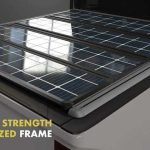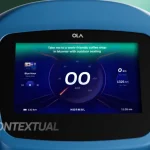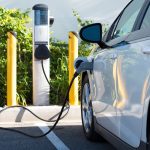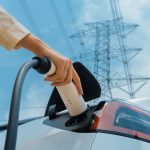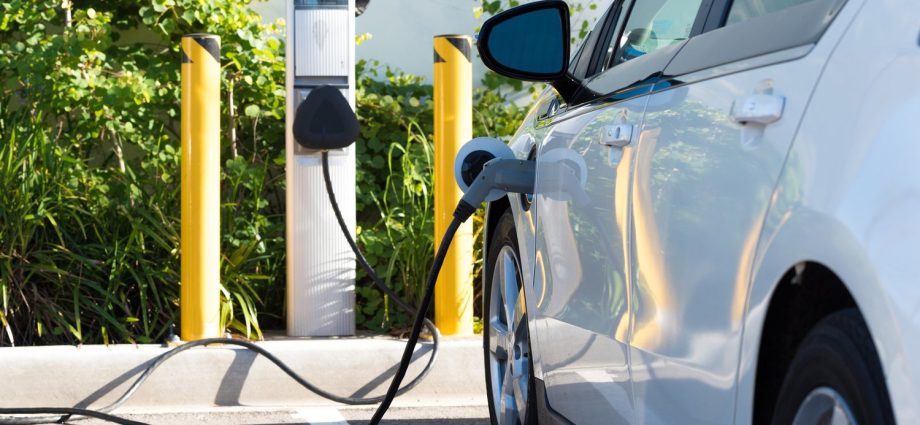Imagine this: a storm knocks out the power in your neighborhood. Houses go dark. But yours? Yours is still lit up, the fridge humming, maybe even the TV on. The secret isn’t a giant, noisy generator; it’s your electric car, quietly powering your home from the driveway.
This isn’t science fiction. It’s the promise of Vehicle-to-Grid (V2G) and home energy management, a one-two punch that’s set to completely change our relationship with energy. Honestly, it turns the whole idea of an electric vehicle on its head. Your car is no longer just a tool for getting from A to B. It’s a massive, rolling battery on wheels. And the question is no longer just “How do we charge it?” but “How can it work for us—and for the grid?”
What Exactly is Vehicle-to-Grid? Let’s Break It Down
Most people get the basic idea of an EV: you plug it in, it charges. Simple. V2G, or bidirectional charging, flips the script. It allows energy to flow both ways. You can charge your car, sure, but you can also pull energy from your car’s battery and send it back to your home or even the local electricity grid.
Think of your EV battery as a giant water barrel. Traditionally, you just fill it up from the tap (the grid). With V2G, you can also open a spigot and pour water back into your house’s plumbing, or even into the town’s water main if they need it. It transforms a single-purpose asset into a dynamic, multi-tool for energy resilience.
The Home Energy Management System: The Brain of the Operation
Okay, so you have this powerful battery on wheels. How do you manage it without constantly making manual decisions? That’s where a home energy management system (HEMS) comes in. This is the smart brain that connects everything.
A good HEMS does the thinking for you. It considers:
- Electricity rates: It knows when power is cheap (like at night) and will charge your car then.
- Your driving schedule: You tell it you need 80% charge by 7 a.m., and it makes sure that happens.
- Solar production: If you have solar panels, it will prioritize using that free, clean energy to charge the car.
- Grid demands: It can respond to signals from your utility company, selling back power during peak demand when electricity is most expensive and the grid is stressed.
In essence, the HEMS turns your home, your car, and your solar panels into a single, coordinated ecosystem. It’s all about optimization.
The Tangible Benefits: Why You’d Actually Want This
Sure, it sounds cool, but what’s in it for you? The benefits are, frankly, substantial.
1. Backup Power You Already Own. This is the big one for a lot of people. With the right equipment, your EV can become a whole-home backup power source during an outage. We’re talking days of power, not hours. It’s a far cry from a gas generator that needs fuel and maintenance.
2. Serious Cost Savings on Your Electric Bill. This is where the home energy management system really earns its keep. It can automatically sell small amounts of energy from your car’s battery back to the grid during times of peak demand—when electricity prices are sky-high. You’re essentially arbitraging energy: buying low, selling high. Over a year, this can add up to hundreds of dollars in credits or cash.
3. Supporting a Greener, More Stable Grid. This is the bigger-picture benefit. Our electrical grid is often strained on hot summer afternoons or cold winter nights. By allowing thousands of EVs to feed power back during these critical times, V2G acts as a massive, distributed “virtual power plant.” This reduces the need to fire up polluting “peaker plants” and helps balance the grid, making room for more renewable energy like wind and solar, which can be intermittent.
The Real-World Hurdles: It’s Not All Smooth Sailing (Yet)
Let’s be real. The technology is still in its relative infancy. Here are the current challenges for V2G home integration.
| Challenge | What It Means for You |
| Limited Vehicle & Charger Availability | Not all EVs are bidirectional. The Nissan Leaf and some Hyundai and Ford models are leading the charge, but choice is limited. You also need a specific, often expensive, bidirectional charger. |
| Battery Degradation Concerns | People rightly worry that constant charging and discharging will wear out their car’s battery faster. The data is still emerging, but smart HEMS software is designed to minimize cycles and protect battery health. |
| Regulatory & Utility Hurdles | Many utility companies and local regulations simply aren’t set up for this yet. The policies, the rate structures, the interconnection rules—it’s a complex web that’s still being untangled. |
That said, the momentum is building. Automakers, charger manufacturers, and utilities are all investing heavily to overcome these barriers.
What You Need to Get Started with V2G at Home
Thinking about future-proofing? Here’s the basic shopping list for a V2G-enabled home.
- A Compatible Electric Vehicle: Do your research. Models that currently support bidirectional charging are your target.
- A Bidirectional Charger: This is a specialized piece of hardware, often called a “charger-discharger.” It’s the physical gateway that enables the two-way flow.
- A Home Energy Management System (HEMS): This could be a dedicated hub or software integrated into your inverter or charger. It’s the essential brain that makes it all work seamlessly.
- Utility Approval & a Compatible Rate Plan: You’ll need to work with your local utility to get permission to connect and to enroll in a specific rate plan that compensates you for the energy you provide.
It’s a commitment, for sure. But for early adopters, the payoff in resilience and potential savings is already there.
The Bigger Picture: A Smarter, More Resilient Future
We’re standing at the edge of a massive shift. For decades, our energy system has been a one-way street: from a few big power plants out to millions of passive consumers. V2G and home energy management shatter that model.
They turn consumers into “prosumers”—people who both consume and produce energy. They create a decentralized, flexible, and incredibly resilient energy network. Imagine a future where millions of EVs are plugged in, not as a drain on the system, but as a collective asset that helps smooth out the bumps in our clean energy transition.
Your car, parked and silent, could be helping to power your neighbor’s house during a blackout. Or helping to prevent a brownout across the city on a hot day. It’s a powerful idea. It redefines what a car is for, and honestly, it redefines what a home can be—a self-sufficient node in a much larger, smarter web. The future of energy isn’t just about generating more power; it’s about managing it with intelligence. And it might just be sitting in your garage.

